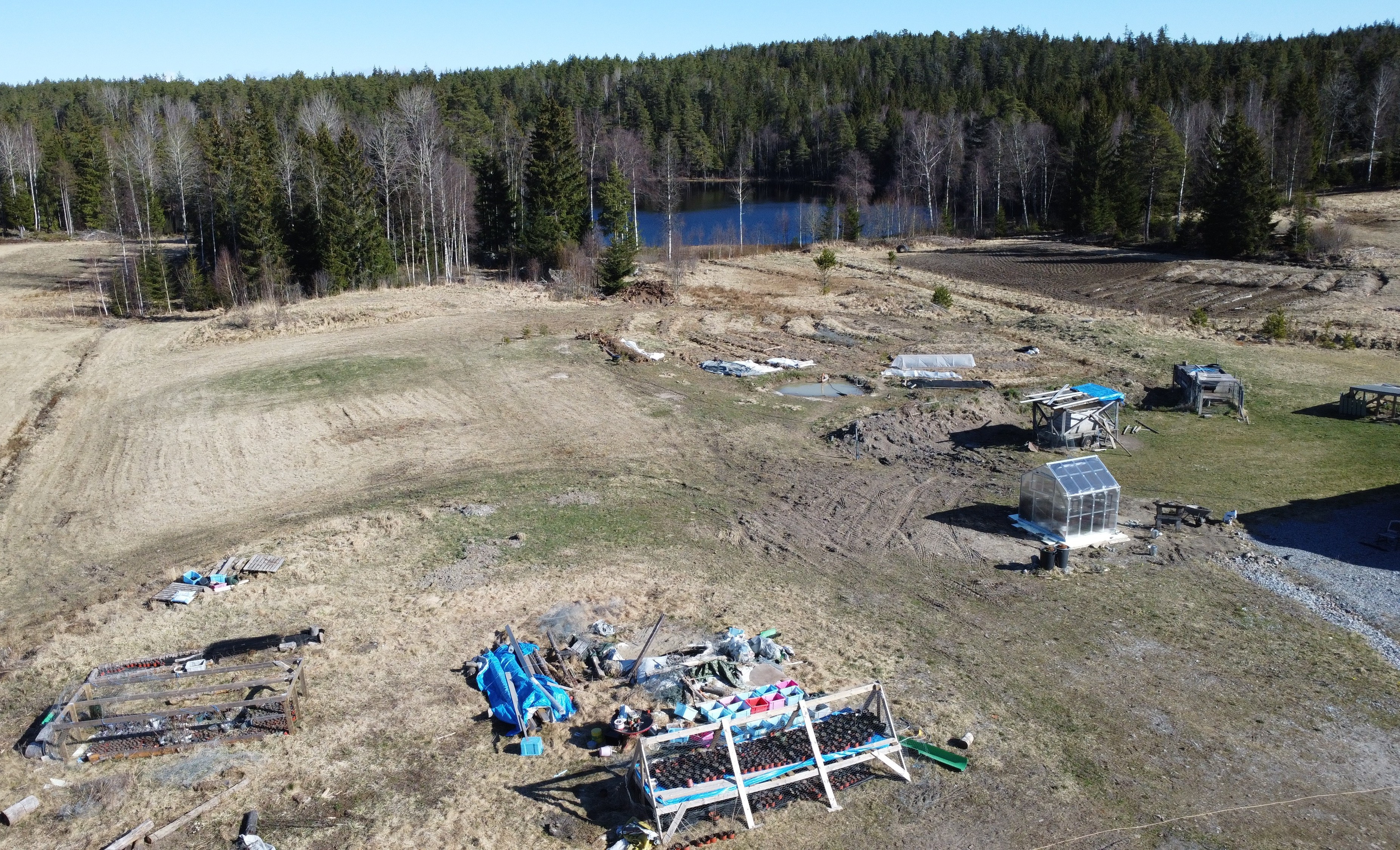 Muskedalen is the farm name of the small farm that was first cleared in the 1760s. In 1941, the farm was closed, and Muskedalen was used as a leisure property. Now Muskedalen is in the process of being resurrected as a permaculture farm. The varied nature with the small plots that have good water inflow makes Muskedalen suitable for testing nature-based cultivation methods. The small house with simple facilities, and a small hut next to it, makes the place low rescource consumption. You can read more about permaculture on the website of the Norsk Permakultur Forening or Permaculture Associaton.
Muskedalen is the farm name of the small farm that was first cleared in the 1760s. In 1941, the farm was closed, and Muskedalen was used as a leisure property. Now Muskedalen is in the process of being resurrected as a permaculture farm. The varied nature with the small plots that have good water inflow makes Muskedalen suitable for testing nature-based cultivation methods. The small house with simple facilities, and a small hut next to it, makes the place low rescource consumption. You can read more about permaculture on the website of the Norsk Permakultur Forening or Permaculture Associaton.
Permaculture in Norway has often become an academic exercise, so there is a need for places where theory can unfold in practice. We need to develop new techniques and re-establish old techniques that were sustainable. When people meet, either digitally or physically, we interact and share knowledge. We are all unique, with our knowledge and experiences. When that knowledge is woven together in permaculture, a design system, we create a sustainable future.
Muskedalen is a real small farm, with challenges in economy and work capacity. We can imagine a sustainable life in an office without having experienced the challenges of reality. New sustainable solutions must find their place in society and there is a need for meeting places between ideals and realities. On a small farm, competence is essential; in ancient times, knowledge was passed down between generations. Today, it is common for people to share knowledge digitally via the internet, but one downside is that nuances are lost.
In nature, there is an established ecosystem where species in their interaction ensure a sustainable existence. In permaculture, we use nature as a model when we create our future existence. When we consider the whole in our designs, it is called systemic design. Holistic thinking is a tool for designing sustainable societies.
These pages are about permaculture from a smallholder's perspective. I write articles that range from small designs such as the urinary system, cultivation systems, people and human interaction to economics and society.
I wrote a permaculture diploma thesis about the development of Muskedalen, but there was no great satisfaction about my diploma thesis. Therefore, I wanted to write a version 2.0 that I am posting on this website. It started with the idea of a chapter with English text, but then I realized that these pages should be in English. I have been on several websites and watched videos in English, then I realized that English is our working language. There may also be WWOOFers or other volunteers who want to read up on Muskedalen. Easter -25, spring is approaching. April has been warm so far. Many plants are on their way up. Three small growing tunnels are set up above the beds. The website is still under construction.
Easter -25, spring is approaching. April has been warm so far. Many plants are on their way up. Three small growing tunnels are set up above the beds. The website is still under construction.
I write in both Norwegian and English. I prioritize getting as much material out as possible, and I have prioritized finishing the English articles first. I do not prioritize perfectionism.
I will try to keep this page alive, where you can follow the development of the permaculture farm. In the thread about the chicken house and the wood dryer, you can follow the design process from when I started with the vision, how it develops along the way, until the construction is completed.
